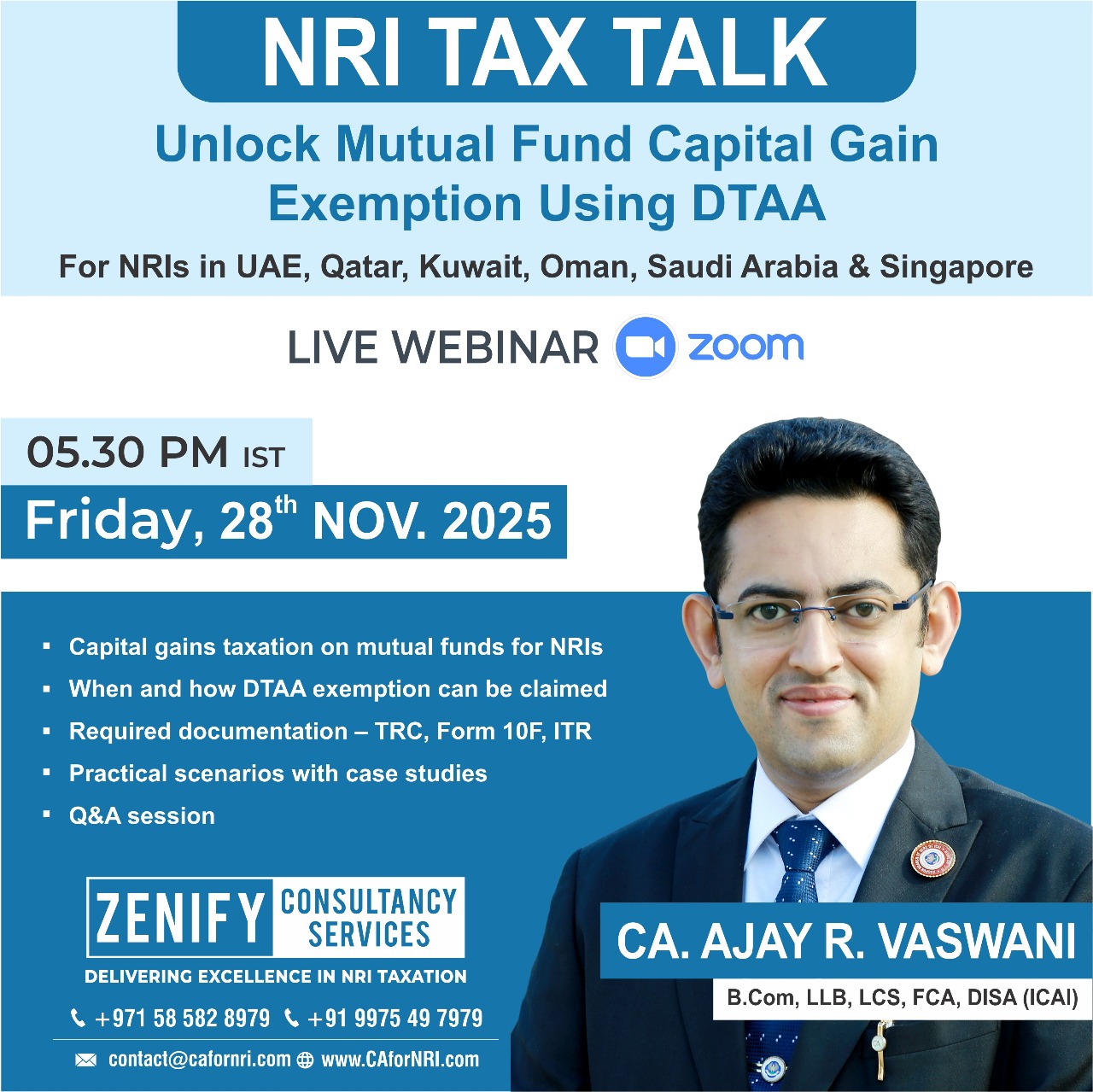Why you’re Probably Paying Tax You Don’t Need To
When you sell your mutual fund investments in India and make a profit (capital gain), the Indian tax department usually deducts TDS (Tax Deducted at Source) — anywhere depending on the fund and holding period.
But here’s the good news:
India has a Double Taxation Avoidance Agreement (DTAA) with Qatar, which can legally allow you to pay ZERO tax in India on these capital gains.
Yes — zero. But it’s not automatic. You need to claim it the right way.
The Core Idea — DTAA between India & Qatar
Under the India–Qatar DTAA, if you’re a tax resident of Qatar (where there is no personal income tax), then:
- Capital gains on investments like mutual funds are taxable only in your country of residence (Qatar)
- Since Qatar doesn’t tax individuals, your capital gains in India become tax-free (as long as certain conditions are met)
Sounds amazing? It is — but here’s how to do it right.
Step-by-Step: How to Claim Tax Exemption on Capital Gains
Step 1: Be Sure You’re an NRI and a Qatar Resident
To be eligible:
- You must qualify as an NRI under Indian tax rules (i.e., you’ve stayed outside India for 182 days or more in the financial year)
- You must be a resident of Qatar during that financial year (stay more than 183 days)
Simple enough.
Step 2: Get a Tax Residency Certificate (TRC) from Qatar
This is your golden ticket. Without it, the Indian tax department will not allow DTAA benefits.
How to Get TRC in Qatar:
- Log in to the Dhareeba Portal
- Go to: Taxpayer Services → Apply for Tax Residency Certificate
- Upload:
- Qatar ID
- Passport copy
- Proof of Indian income (like mutual fund statement)
- Pay a fee of QAR 500 (roughly ₹11,500)
- You’ll receive the TRC digitally in 5–10 working days
That’s it.
Step 3: Fill Form 10F (Don’t Worry, its Simple)
It’s a one-page form where you mention:
- Your name and address
- Country of residence (Qatar)
- Tax ID number
- That you have no Permanent Establishment in India
Step 4: Self-Declaration Letter
This is just a brief letter saying:
- You are an NRI residing in Qatar
- You do not have any business or base of operations (i.e., no “Permanent Establishment”) in India
- Your capital gains are being declared as per DTAA
Step 5: Submit All These to Mutual Fund House/Registrar
Send your documents (TRC, Form 10F, declaration, PAN copy) to:
- Your mutual fund house (AMC), or
- Their official registrar (like CAMS or KFintech)
This helps prevent unnecessary TDS when you redeem your investments.
Even if TDS is already deducted, you can claim a refund later via ITR.
Don’t Forget to File Your ITR in India
Even if you pay zero tax, you still need to file your Income Tax Return (ITR) in India — especially if:
- Your capital gains are large
- TDS was deducted
- You want to stay fully compliant and avoid future scrutiny
What to Show in ITR:
- Capital gains under “Exempt Income”
- Mention Qatar as your country of residence
- Quote your TRC and DTAA details
Use Form ITR-2 for this, and always retain proof of your TRC and Form 10F.
Real-Life Example
Let’s say you made ₹5 lakhs in capital gains from mutual funds in India.
- Without DTAA/TRC: ₹50,000–₹75,000 tax gone as TDS
- With DTAA/TRC: ₹0 tax in India
- And no tax in Qatar either
Final Checklist
| Action | Status |
| Apply for TRC in Qatar via Dhareeba | ✔ |
| Fill Form 10F | ✔ |
| Write simple self-declaration | ✔ |
| Submit docs to Indian AMC/registrar | ✔ |
| File ITR to report exempt income | ✔ |
In Short…
If you’re in Qatar and have investments in Indian mutual funds, you don’t need to pay tax on capital gains — legally.
But it’s your responsibility to:
- Get the right documents
- Inform the mutual fund house
- File your ITR properly
Need Help?
We at Zenify Consultancy Services specializes in NRI taxation. We help Qatar-based NRIs:
- Apply for TRC
- Draft Form 10F & declarations
- File ITRs with DTAA claims
- Get TDS refunds for past redemptions
Reach out if you want to simplify the process — without the paperwork headache.



